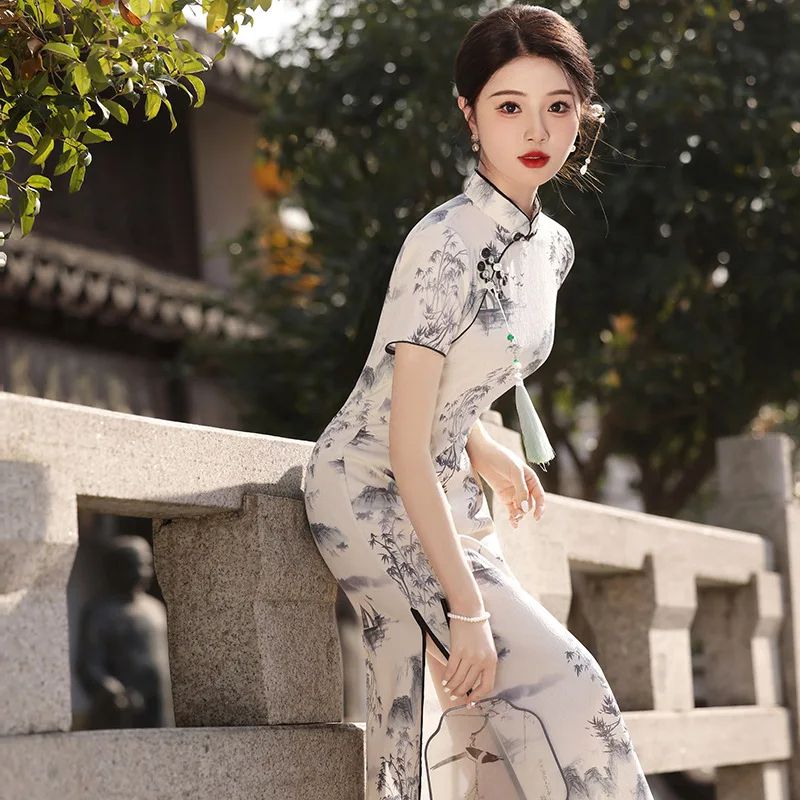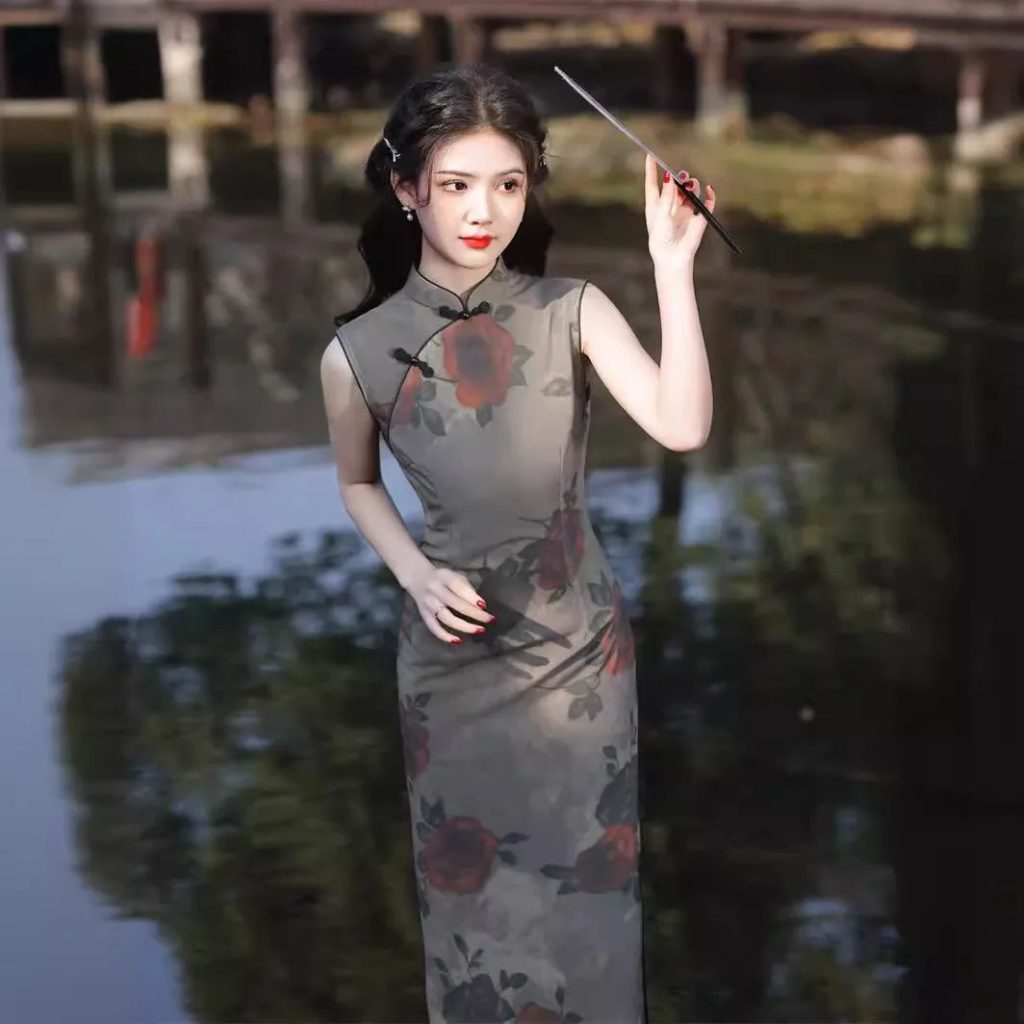Audrey Hepburn: The Epitome of Grace and Elegance
In the annals of fashion history, the qipao, a traditional Chinese dress, has left an indelible mark. Its timeless silhouette and intricate designs have captivated women worldwide, inspiring countless interpretations and variations. Among the most iconic wearers of the qipao are women who have not only embraced its beauty but also transformed its perception, leaving an enduring legacy on the fashion landscape.

Audrey Hepburn’s Influence
Audrey Hepburn, the epitome of grace and elegance, epitomized the qipao’s allure. Her iconic portrayal of Princess Ann in the 1957 film Roman Holiday showcased the dress’s ability to convey both sophistication and femininity. Hepburn’s slender frame and delicate features complemented the qipao’s form-fitting design, creating an unforgettable image that cemented the dress’s status as a symbol of timeless style.
A Personal Affection for the Qipao
Beyond the silver screen, Hepburn’s love for the qipao extended to her personal wardrobe. She often incorporated the dress into her everyday attire, pairing it with chic accessories and understated makeup. Her ability to effortlessly blend Eastern and Western aesthetics inspired countless women to embrace the qipao as a versatile and fashionable garment.
Anna May Wong: A Trailblazer
Another notable qipao wearer was Anna May Wong, the first Chinese American actress to achieve international fame. Wong’s bold and confident style challenged prevailing stereotypes and paved the way for greater representation of Asian women in the entertainment industry. Her frequent appearances in qipaos on screen and in public life helped to popularize the dress among Western audiences, showcasing its beauty and cultural significance.
Contemporary Interpretations of the Qipao
In contemporary fashion, the qipao continues to evolve, inspiring designers to create modern interpretations that blend tradition with innovation. Designers such as Vivienne Westwood and Alexander McQueen have incorporated qipao elements into their collections, paying homage to its enduring appeal. These contemporary designs often feature bold colors, unconventional fabrics, and asymmetrical cuts, reflecting the ever-changing nature of fashion while preserving the qipao’s timeless essence.
The Enduring Legacy
The iconic women who have worn the qipao throughout history have not only showcased its beauty but have also played a pivotal role in shaping its perception. From Audrey Hepburn’s timeless elegance to Anna May Wong’s groundbreaking style, these women have left an enduring legacy on the fashion landscape, ensuring that the qipao remains a symbol of cultural heritage, feminine empowerment, and enduring style.
Michelle Yeoh: A Modern-Day Icon of Qipao Moda
Michelle Yeoh, the renowned Malaysian actress, has emerged as a modern-day icon of qipao fashion. Her captivating performances in films such as Crouching Tiger, Hidden Dragon E Crazy Rich Asians have not only showcased her acting prowess but also brought the qipao to the forefront of global fashion.

A Contemporary Twist
Yeoh’s interpretation of the qipao is both elegant and contemporary. She often opts for qipaos in vibrant colors and bold patterns, adding a touch of modernity to the traditional garment. Her qipaos are also tailored to accentuate her figure, creating a silhouette that is both alluring and empowering.
Advocacy for the Qipao
Beyond her on-screen appearances, Yeoh has also been a vocal advocate for the qipao. She has worn qipaos to numerous red carpet events and public appearances, using her platform to promote the indumento‘s cultural significance and timeless appeal.
Inspiring a New Generation
Yeoh’s influence on qipao fashion has been profound. Her bold and stylish approach has inspired countless women to embrace the qipao as a symbol of both tradition and modernity. She has also helped to dispel the misconception that the qipao is only suitable for older women, proving that it can be a versatile and flattering garment for women of all ages.
Historical Influences
In addition to Yeoh, other notable women have played a significant role in shaping the history of qipao fashion. In the early 20th century, Shanghai socialite Soong Ching-ling became known for her chic and sophisticated qipaos, which often featured intricate embroidery and luxurious fabrics. Her style influenced countless women in China and beyond, helping to establish the qipao as a symbol of glamour and modernity.
During the 1950s and 1960s, Hong Kong actress Grace Chang popularized the qipao in the West. Her iconic qipao performances in films such as Love Parade E The World of Suzie Wong captivated audiences worldwide, introducing the garment to a new generation of fashion enthusiasts.
The Qipao’s Evolution
Today, the qipao continues to evolve and adapt to changing fashion trends. Contemporary designers are experimenting with new fabrics, colors, and silhouettes, creating qipaos that are both stylish and respectful of the garment’s traditional roots.
The iconic women who have worn qipaos throughout history have played a pivotal role in shaping its evolution. From Soong Ching-ling’s elegant sophistication to Grace Chang’s glamorous allure and Michelle Yeoh’s modern-day interpretation, the qipao has remained a timeless symbol of femininity, cultural heritage, and fashion innovation.
Maggie Cheung: The Timeless Beauty of the Qipao
In the realm of fashion, the qipao has captivated hearts and minds for centuries. Its timeless elegance and alluring silhouette have made it an iconic garment, worn by women who have left an indelible mark on fashion history. Among them, Maggie Cheung stands out as a true embodiment of the qipao’s enduring charm.

Iconic Portrayal
Cheung’s portrayal of the enigmatic Su Li-zhen in Wong Kar-wai’s masterpiece In the Mood for Love cemented her status as a qipao icon. Her graceful movements and ethereal beauty brought the garment to life, showcasing its ability to convey both sensuality and sophistication. The qipao’s high neckline, fitted bodice, and flowing skirt accentuated Cheung’s delicate figure, creating an unforgettable image that has inspired countless designers and fashion enthusiasts.
A Personal Style Statement
Beyond the silver screen, Cheung has consistently embraced the qipao as a personal style statement. Her love for the garment is evident in her numerous public appearances, where she effortlessly exudes an air of timeless glamour. Whether attending red carpet events or simply strolling through the streets, Cheung’s qipao choices are always impeccable, demonstrating her deep understanding of the garment’s cultural significance and its ability to empower women.
Resurgence of Interest
Cheung’s influence on qipao fashion extends far beyond her own wardrobe. Her iconic portrayal in In the Mood for Love has sparked a renewed appreciation for the garment, leading to a resurgence of interest in traditional Chinese fashion. Designers have drawn inspiration from Cheung’s style, incorporating elements of the qipao into their contemporary collections. As a result, the qipao has become a versatile and modern piece, transcending its traditional roots to become a symbol of both cultural heritage and fashion innovation.
Enduring Legacy
Maggie Cheung’s enduring legacy as a qipao icon is a testament to the garment’s timeless appeal. Her ability to embody the qipao’s essence, both on and off-screen, has cemented her place in fashion history. Through her unwavering appreciation for the garment, Cheung has not only preserved its cultural significance but also inspired a new generation of fashion enthusiasts to embrace the qipao’s timeless beauty and empowering allure.
